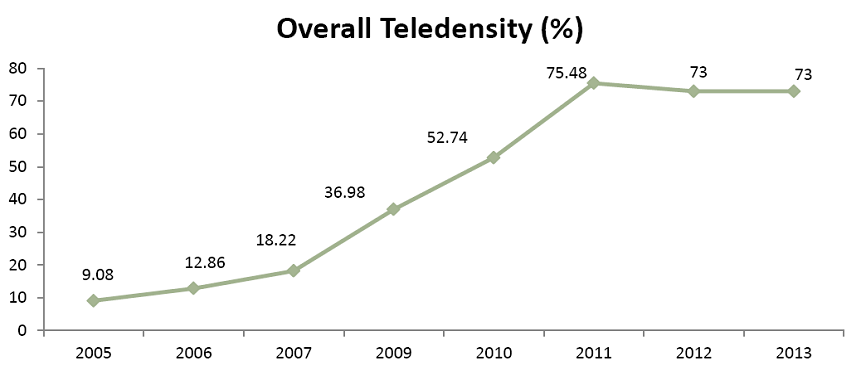Abstract
India has surpassed many countries in the realization of the MDGs. It is among the countries that have met a number of set targets. This essay will examine India’s achievement of the MDGs. The progress of MDG markers will be discussed in relation to the stipulated target values. The problems associated with the achievement of these goals will also be discussed and solutions to the problems.
Introduction
The millennium pronouncement, made during the United Nations assembly in the early 2000, incorporated eight aspirations commonly known as the Millennium Development Goals (MDGs (Government of India, 2013, p. 6). Eighteen objectives were set as yardsticks for measuring the eight Millennium Development Goals. Out of the eighteen objectives, twelve are applicable to India.
There are 53 markers for measuring the country’s progress towards the realization of the MDGs (UNESCAP, 2015, p. 4). While the goals are broad in nature, the objective are more particular and are described in actual terms (Government of India, 2013, p. 8).
The essay will only focus on 4 MDGs, namely: hunger and poverty alleviation, universal primary education, gender equity and women empowerment, environmental sustainability and global partnerships for development. The essay will analyze the country’s achievement of MDGs based on the updated data sets. The progress of MDG markers will be discussed in relation to the stipulated target values. The problems associated with the achievement of these goals will also be discussed and solutions to the problems.
Significance of the selected goals
The selected goals provide a blueprint for strategizing intercession programs and yardsticks to monitor progress in improving the lot of humanity and poverty alleviation. They also help in eliminating any form of deprivation and conservation of environmental resources. In addition, global partnership plays a crucial role in exchange of ideas, opening new opportunities and general economic growth.
Progress of the selected goals
The country has so far managed to reduce poverty level by half. The Poverty Head Count Ratio (PHCR) is currently at 20.74 percent against the target of 23.9 percent. Likewise, the country has managed to reduce the number of people suffering from food shortage by 50 percent.

Universal primary education has already been realized. The overall enrollment rate is about 99.89 percent. The Apparent survival Rate, which is the proportion of students who finish primary education, is around 90 percent (UNESCAP, 2015, p. 14). The country is also making great strides in eliminating gender disparity, particularly in the educational sector.\ Gender Parity Index in primary education has already been achieved. The proportion of women employed in the non – agricultural sector is about 20 percent. This figure is expected to reach 23.1 percent by the end of the year against the target of 50 percent. Similarly, the percentage of women holding elective seats is about 12 percent against the target of 50 percent in 2015.

India has been able to integrate the values of sustainable development into its laws and programs. This is aimed at preventing the destruction of natural ecosystems. The country’s forest cover has increased by roughly 1150 sq. km. The protected areas cover about 5 percent of the total land area.
The percentage of households without access to clean water and sanitation has decreased to 17 percent against the target of 20 percent by 2015. On the other hand, the proportion of households without sanitation facility has declined to 43 percent by 2015 against the target of 5 percent (UNESCAP, 2015, p. 12).
Last but not least, India’s cooperation with global partners has vastly improved, particularly in the private sector. This has been enhanced by the information and communication technologies. Nevertheless, overall tendency, which is the number of foreign phone calls per 1000 people, has declined since 2011 after a considerable progress (UNESCAP, 2015, p. 15).

Problems associated with the realization of the selected goals
One of the greatest challenges associated with the fight against hunger is overreliance on food imports. The country still lacks self sufficiency in the production of food. Despite increasing the area under paddy rice by nearly 20 percent, the self sufficiency level is still around 68.2, which is way below the target of 70 percent.
It should be noted that rice is a staple food in India and, therefore, can be used to benchmark the aggregate food production in the country (Government of India, 2015, p. 20). The universal primary education has led to congestion in schools and shortage of teachers due to abnormal enrollment. The student to teacher ratio is way below the conventional standard. In addition, the government has been forced to borrow more funds in order to meet the selected goals. This has put the country at a huge risk (UNESCAP, 2015, p. 14).
Recommendations
The government can overcome the problem of overreliance on food imports by increasing the area under food crops, providing subsidized agricultural inputs and embracing new farming technologies. Teacher to student ratio can be enhanced by employing more teachers and building more schools. The huge amount of debts can also be avoided by setting realistic targets.
Conclusion
Self-sufficiency in food production is very important since over-reliance on food imports puts the country at a huge risk in terms of sovereignity and overdependence on other countries for key food commodities. In addition, inadequate education facilities and low teacher to student ratio can compromise the quality of education. Therefore, they are very crucial. Lastly, setting unrealistic targets can create imaginary failures, which can put a country under enormous pressure.
References
Government of India. (2013). Towards Achieving Millennium Development Goals in India. New Delhi: Ministry of Statistics and Programme Implementation.
Government of India. (2015). Millennium Development Goals: India Country Report. New Delhi: Ministry of Statistics and Programme Implementation.
UNESCAP. (2015). India and thee MDGs: Towards a Sustainable Future for ALL. New Delhi and New York: UN Publications.